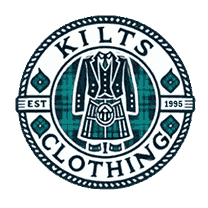Do British Royals Wear Kilts? Exploring the History and Tradition

The British Royal Family has long been associated with elegance and tradition. One intriguing aspect of this tradition is their occasional embrace of Scottish attire, particularly kilts. But why do members of the royal family wear traditional kilt, and how does this practice fit into their broader historical and cultural heritage? In this article, we delve into the fascinating world of kilts within the context of British royalty.
Do Royals Wear Kilts?
Yes, British royals do wear traditional kilt, and it’s a tradition that speaks volumes about their connection to Scotland. The Royal Family’s choice to don kilts at various events and ceremonies reflects their respect for Scottish heritage and culture. This practice is not just ceremonial but serves as a gesture of unity and acknowledgment of Scotland's role within the United Kingdom.
The Significance of Kilts in Scottish Heritage
Kilts, a symbol of Scottish pride and tradition, have a rich history that dates back to the early 16th century. Originally worn as a form of practical traditional highland kilt and have evolved into a prominent cultural icon. The kilt's design and the tartan patterns associated with it often represent different Scottish clans or regions, making it a potent symbol of Scottish identity.
British Royals and Their Scottish Connection
The British Royal Family's connection to Scotland is deep-rooted. The monarchy's links to Scottish heritage are evident through various ceremonial practices and personal attire. Kilts, as a part of Scottish Highland dress, have been embraced by the royals during visits to Scotland, formal occasions, and traditional events.
When Do Royals Wear Kilts?
Royal Ceremonies and Formal Events
British royals frequently wear kilts during state occasions and formal events that celebrate Scottish culture. Some key moments include:
1. Coronation Day and State Visits:
During significant state occasions, such as King Charles III’s coronation, kilts are worn to emphasize Scotland’s importance within the United Kingdom. The inclusion of traditional Scottish attire during such high-profile events underscores the monarchy's respect for Scottish traditions.
2. Royal Visits to Scotland:
Kilts are also a common choice when the Royal Family visits Scotland. These visits often include formal receptions and public engagements where the royals dress in kilts to honor their host nation. For example, during his recent visit to Balmoral Castle, King Charles III chose to wear a kilt, reflecting the estate’s Scottish heritage.
King Charles III’s Appearances
King Charles III has been frequently seen in kilts during his visits to Scotland. His choice of tartan often aligns with the occasion and reflects his personal and family connections to Scotland. For instance, during his recent visit to Balmoral Castle, King Charles wore a kilt to celebrate the estate’s Scottish heritage.

Prince William’s Scottish Dress
Prince William also participates in this tradition, wearing kilts at various Scottish events. His attire, including during the 2015 Scottish Referendum celebrations, highlights his role in honoring Scottish culture and heritage. Prince William’s choice of Scottish dress reflects the monarchy’s ongoing respect for Scotland.
The Broader Context: Kilts and Scottish National Figures
The tradition of wearing kilts is not limited to the British Royal Family. For example, Hamza Yousaf, the leader of the Scottish National Party, also embraces this tradition. His choice to wear a kilt during official functions highlights the garment's significance in Scottish culture and its role in celebrating Scottish identity. This example underscores how kilts are a meaningful symbol of Scottish pride across different sectors of society.
The Legacy of Kilts in Royal Fashion
The tradition of wearing kilts within the British Royal Family underscores their historical and cultural ties to Scotland. Kilts are more than just clothing; they are a symbol of respect and unity.
Kilts as a Cultural Symbol
Kilts embody Scottish pride and cultural heritage. For the Royal Family, wearing kilts is a way to honor Scotland’s contributions to the United Kingdom and celebrate the rich traditions that the kilt represents.
The Continuing Tradition
The practice of wearing kilts by British royals demonstrates an ongoing commitment to Scottish heritage. Whether during state ceremonies or public appearances, kilts serve as a powerful reminder of the historical and cultural connections that unite Scotland with the broader UK. And there are lot of traditional kilts company in uk and abroad that sell these kilts.
Conclusion
The tradition of British royals wearing traditional kilts reflects their deep connection to Scottish culture and history. From formal state events to personal engagements, kilts serve as a meaningful symbol of Scotland’s rich heritage. By embracing this tradition, the Royal Family not only pays tribute to Scotland’s past but also reinforces the enduring bond between Scotland and the British monarchy.
FAQ'S
You’ll often see male members of the Firm, including King Charles, wearing kilts while carrying out engagements in the country.
To honor Scottish heritage and respect traditional customs.
He has not been seen wearing one since he was a child because he does not like them.
Prince Charles, Prince William, and Prince Harry have all worn kilts.
It’s rare, but they may wear kilts at Scottish-themed events abroad.
It demonstrates their appreciation for Scottish traditions.
Yes, during public appearances and events in Scotland.

